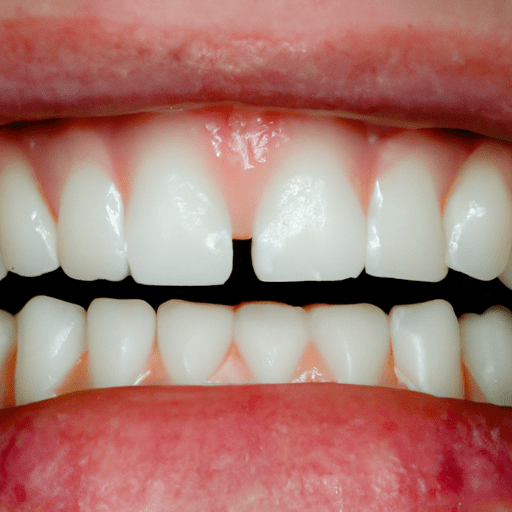Sinus infections can be a total nuisance, causing discomfort and affecting our daily lives. From the annoying snoring to the frustrating congestion, these infections can certainly make us feel less than our best. But fret not, because this article is here to shed some light on the causes, symptoms, and treatment options for sinus infections. Whether you’re curious about what triggers these pesky infections or seeking relief from the bothersome symptoms, we’ve got you covered. So, sit back, grab a cup of tea, and let’s dive into the world of sinus infections together!

Understanding Sinus Infections
Sinus infections, also known as sinusitis, are common conditions that occur when the tissues lining the sinuses become inflamed or infected. The sinuses are hollow cavities located in the skull, and they are connected to the nasal passages. When sinus infections occur, they can cause a range of uncomfortable symptoms and can significantly impact a person’s quality of life.
Definition of Sinus Infection
A sinus infection is a condition characterized by inflammation or infection of the sinuses. The sinuses themselves are air-filled spaces in the bones of the face and skull. When these sinuses become blocked or filled with fluid, bacteria, viruses, or fungi can grow, leading to an infection. This inflammation and infection can cause a variety of symptoms, including nasal congestion, facial pain or pressure, and headache.
Types of Sinus Infections
There are several different types of sinus infections, depending on which sinuses are affected and how long the infection lasts. The most common types of sinus infections include acute sinusitis, which lasts for less than four weeks, and chronic sinusitis, which persists for more than twelve weeks. Additionally, there are other types, such as subacute sinusitis, which lasts between four and twelve weeks, and recurrent sinusitis, which involves repeated episodes of acute sinusitis.
Anatomy of the Sinuses
The sinuses are air-filled spaces located within the bones of the face and skull. They are lined with a mucous membrane that helps to produce mucus, which acts as a protective barrier against viruses, bacteria, and fungi. The sinuses are connected to the nasal passages through small openings called ostia. This process allows mucus to drain from the sinuses into the nasal cavity, helping to keep the sinus passages clear and functioning properly.
Roles of Sinuses
The sinuses serve several important functions in the body. One of their primary roles is to humidify and filter the air we breathe, helping to trap and remove dust, allergens, and other particles. The sinuses also play a crucial role in the production of mucus, which helps to keep the nasal passages moisturized and prevent them from drying out. Additionally, the sinuses contribute to the resonance of the voice and help to lighten the weight of the skull.
How Sinuses are Connected
The sinuses are interconnected through a network of narrow passages and small openings called ostia. These ostia allow mucus to flow from the sinuses into the nasal passages, where it can be expelled from the body. However, when the sinuses become blocked or inflamed, the flow of mucus can be disrupted, leading to the development of a sinus infection.

Causes of Sinus Infections
Sinus infections can be caused by various factors, including viruses, bacteria, fungi, and allergies. Understanding the different causes can help in identifying the appropriate treatment and prevention strategies.
Viruses and Sinus Infections
The most common cause of sinus infections is viral infections, such as the common cold or the flu. These viruses can cause inflammation and swelling of the sinuses, leading to a blockage of the ostia and the subsequent development of a sinus infection. Viral sinus infections typically resolve on their own within a week or two, without the need for specific treatment.
Bacteria and Sinus Infections
Bacterial infections can also lead to sinus infections, particularly when the sinuses become blocked or inflamed due to a viral infection. Bacteria, such as Streptococcus pneumoniae or Haemophilus influenzae, can then grow in the sinuses and cause an infection. Bacterial sinus infections often require medical treatment, such as antibiotics, to clear the infection.
Fungi and Sinus Infections
Fungal sinus infections are relatively rare but can occur in individuals with a weakened immune system or those with a history of chronic sinusitis. Fungi, such as Aspergillus or Mucor, can invade the sinuses and cause an infection. These fungal infections can be challenging to treat and may require long-term antifungal medication or surgical intervention.
Allergies Leading to Sinus Infections
Allergies can contribute to the development of sinus infections by causing inflammation and swelling of the nasal passages and sinuses. Allergic rhinitis, commonly known as hay fever, can make the sinuses more susceptible to infection, as the constant congestion and inflammation create an ideal environment for bacteria or viruses to thrive. Managing allergies through proper treatment and avoidance of triggers can help reduce the risk of sinus infections.
Risk Factors for Sinus Infections
While anyone can develop a sinus infection, certain risk factors can increase the likelihood of experiencing one. Understanding these risk factors can help individuals take appropriate measures to prevent or manage sinus infections.
Smoking and Its Effects on Sinuses
Smoking can significantly increase the risk of sinus infections. The chemicals and toxins present in cigarette smoke can irritate the nasal passages, leading to inflammation and swelling. This irritation impairs the normal function of the sinuses and can make them more susceptible to infection. Quitting smoking or avoiding exposure to secondhand smoke can help reduce the risk of sinus infections.
Compromised Immunity and Sinus Infections
A weakened immune system can make individuals more vulnerable to sinus infections. Conditions such as HIV/AIDS, diabetes, and certain autoimmune disorders can impair the body’s ability to fight off infections. Additionally, certain medications, such as immunosuppressants, can also increase the risk of sinus infections. Maintaining a healthy lifestyle, including proper nutrition, regular exercise, and adequate sleep, can help support a robust immune system and reduce the risk of infections.
Structural Problems Leading to Infection
Structural problems within the sinuses or nasal passages can contribute to the development of sinus infections. These issues can include deviated septum, nasal polyps, or other abnormalities that obstruct the proper drainage of the sinuses. When the sinuses cannot properly drain, mucus can accumulate and result in the growth of bacteria or fungi. In some cases, surgical intervention may be necessary to correct these structural issues and prevent recurrent sinus infections.

Symptoms of Sinus Infections
Sinus infections can cause a range of symptoms that can vary in severity and duration. These symptoms can be both physical and affect a person’s mood or behavior.
Physical Symptoms
Common physical symptoms of sinus infections include nasal congestion or blockage, facial pain or pressure, headache, cough, and a thick, discolored nasal discharge. Additionally, individuals may experience a reduced sense of taste or smell, fatigue, bad breath, and a feeling of fullness in the ears. These physical symptoms can significantly impact a person’s daily activities and quality of life.
Changes in Mood or Behavior
Sinus infections can also affect a person’s mood or behavior. The discomfort and pain associated with sinus infections can lead to irritability, difficulty concentrating, and reduced productivity. Sleep disturbances due to nasal congestion or discomfort can also contribute to mood changes and fatigue. Recognizing the impact of sinus infections on mental well-being is essential for seeking appropriate treatment and managing the condition effectively.
Connection between Sinus Infections and Snoring
Sinus infections and snoring are often interconnected, with each condition potentially affecting the other. Understanding this connection can help individuals address both issues effectively.
How Sinus Infections Can Lead to Snoring
Sinus infections can cause nasal congestion and inflammation, which can lead to snoring. When the sinuses are blocked or inflamed, airflow through the nasal passages becomes restricted. This can result in the vibrating of the soft tissues in the throat during breathing, leading to the characteristic sound of snoring. Addressing underlying sinus infections can help alleviate snoring and improve overall sleep quality.
The Impact of Snoring on Sinus Infections
On the other hand, snoring can also contribute to the development or exacerbation of sinus infections. The vibration of the soft tissues in the throat during snoring can create negative pressure in the sinuses, causing mucus to be drawn into the sinuses instead of properly draining. This can lead to the accumulation of mucus and subsequent infection. Managing snoring through lifestyle changes or specific treatments can help reduce the risk of sinus infections.
Diagnosing Sinus Infections
Diagnosing a sinus infection typically involves a combination of medical history, physical examination, and imaging tests to evaluate the symptoms and rule out other possible causes.
Medical History
The healthcare provider will begin by taking a detailed medical history, including a discussion of symptoms, their duration, and any factors that may have triggered or worsened the sinus infection. It is important to provide accurate and thorough information to help guide the diagnostic process effectively.
Physical Examination
During a physical examination, the healthcare provider will examine the nasal passages, sinuses, and throat. They will assess for signs of inflammation, redness, or any visible drainage. The provider may also gently press on specific areas to check for tenderness or pain, which can indicate a sinus infection.
Imaging Tests
In some cases, imaging tests may be necessary to confirm the diagnosis and evaluate the extent of sinus infection. X-rays, computed tomography (CT) scans, or magnetic resonance imaging (MRI) scans can provide detailed images of the sinuses and help identify any abnormalities or blockages. These images can help guide treatment decisions and may be particularly useful in cases of chronic or recurrent sinus infections.
Traditional Treatments for Sinus Infections
The treatment of sinus infections typically involves a combination of addressing the underlying cause, managing symptoms, and preventing complications. Traditional treatments for sinus infections may include medications and lifestyle modifications.
Antibiotics
If a bacterial sinus infection is suspected or confirmed, antibiotics may be prescribed to eliminate the infection. Antibiotics work by targeting and killing the bacteria causing the infection. It is essential to take the full course of antibiotics as prescribed, even if symptoms improve, to ensure the infection is fully eradicated.
Steroids
Corticosteroids, such as prednisone, may be prescribed to reduce inflammation and swelling in the sinuses. These medications can help alleviate symptoms, particularly nasal congestion and facial pressure. Steroids can be taken orally or administered as a nasal spray, depending on the severity of symptoms and the healthcare provider’s recommendations.
Pain Relievers
Over-the-counter pain relievers, such as acetaminophen or ibuprofen, can help alleviate pain and reduce fever associated with sinus infections. These medications can provide temporary relief and improve overall comfort. However, it is important to follow the recommended dosage and consult with a healthcare provider if symptoms persist or worsen.
Alternative Treatments for Sinus Infections
In addition to traditional treatments, several alternative approaches may help in managing and preventing sinus infections. These treatments can be used in conjunction with conventional therapies to provide a comprehensive approach to sinus infection management.
Dietary Changes
Making dietary changes may help reduce inflammation and support immune function, thus reducing the risk of sinus infections. Consuming a balanced diet rich in fruits, vegetables, whole grains, and lean protein can provide essential nutrients to support overall health. Additionally, some individuals find that avoiding specific trigger foods, such as dairy or processed foods, can help reduce congestion and improve their sinus symptoms.
Natural Remedies
Natural remedies, such as saline nasal irrigation or steam inhalation, can help alleviate symptoms and promote sinus drainage. Saline nasal irrigation involves rinsing the nasal passages with a saline solution, which helps to flush out mucus and hydrate the sinus tissues. Steam inhalation, on the other hand, involves breathing in steam, which can help to loosen mucus and relieve congestion. These natural remedies can be performed at home and are generally safe when done correctly.
Chiropractic Care
Some individuals find relief from sinus infection symptoms through chiropractic care. Chiropractic adjustments can help improve the alignment of the spine and reduce any restrictions or misalignments that may be affecting the sinuses. By restoring proper nerve flow and alignment, chiropractic care can promote optimal sinus function and reduce the frequency of infections. It is important to consult with a qualified chiropractor and discuss individual symptoms and needs before starting chiropractic treatment.
Preventing Sinus Infections
Preventing sinus infections involves both lifestyle changes and, in certain cases, medical interventions. By adopting certain measures, individuals can reduce the risk of developing sinus infections and improve overall sinus health.
Lifestyle Changes
Maintaining good hygiene practices, such as washing hands regularly and avoiding touching the face with unwashed hands, can help prevent the spread of viruses and bacteria that can lead to sinus infections. Additionally, managing allergies through avoidance of triggers, such as dust or pollen, and proper treatment can help reduce inflammation and prevent infections. Staying hydrated, maintaining adequate humidity levels in the home, and avoiding exposure to environmental irritants, such as cigarette smoke or strong chemicals, can also support sinus health.
Medical Interventions
In some cases, individuals with chronic or recurrent sinus infections may benefit from medical interventions aimed at addressing underlying causes or structural issues. This can include surgical procedures to correct anatomical abnormalities or improve sinus drainage. A healthcare provider will determine the most appropriate medical interventions based on an individual’s specific needs and circumstances.
In conclusion, sinus infections are common conditions that can cause significant discomfort and impact a person’s daily life. Understanding the causes, symptoms, and treatment options for sinus infections can help individuals manage and prevent these infections effectively. By adopting appropriate measures, individuals can alleviate symptoms, reduce the risk of sinus infections, and improve overall sinus health.






